#Frances Hamerstrom
Photo

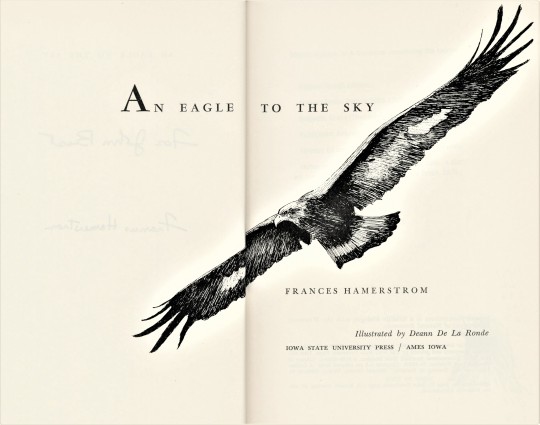

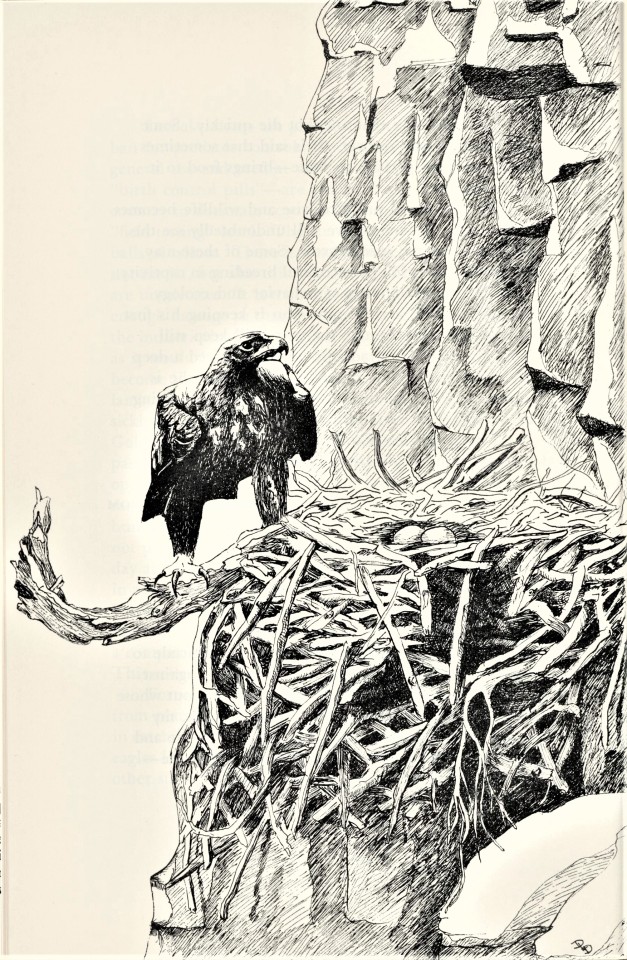

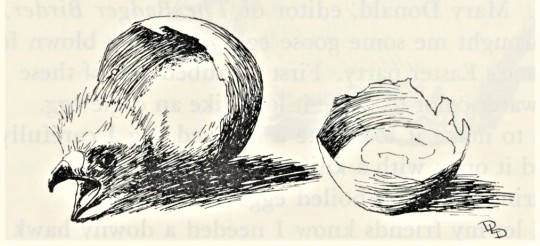




A Golden Eagle Feathursday
In the late 1960s, Wisconsin wildlife biologist Frances Hamerstom (1907-1998) began training and rehabilitating two Golden Eagles (Aquila chrysaetos), Chrys and Nancy. From her field notes, Hamerstrom composed this accessible narrative of her experience, An Eagle to the Sky, published by the Iowa State University Press in 1970. At the time, young artist Deann De La Ronde was living with Hamerstrom and her naturalist husband Fred Hamerstrom to observe their activities and the wildlife they worked with, and provided these pen and ink drawings for the publication. De La Ronde has since established herself as a professional wildlife artist. The jacket painting of Frances Hamerstrom with Nancy is by the noted wildlife painter Francis Golden.
Originally from Boston, Frances Hamerstrom studied with Paul Errington at Iowa State University, where she received her Bachelor of Science degree, and conducted her graduate work at the University of Wisconsin with the famous Aldo Leopold. Both Hamerstroms went to work as biologists for the Wisconsin Department of Natural Resources, where Frances worked for 23 years. They both developed an expertise in the conservation of the endangered prairie chicken and are credited by naturalists for saving the species from expiration in Wisconsin. For their efforts, the Hamerstroms were awarded he National Wildlife Federation Award for Distinguished Service to Conservation in the same year this book was published. A prolific writer, Frances Hamerstrom was also a licensed falconer, and developed an expertise in birds of prey, publishing Birds of Prey in Wisconsin in 1972.
Our copy of An Eagle to the Sky is a donation of one of our principal benefactors John S. Best, also active in conservation issues, and this volume is a signed presentation copy to Best form the author.
View other posts on the work of Frances Hamerstrom.
View more Feathursday posts.
#Feathursday#Golden Eagles#wildlife conservation#wildlife art#Frances Hamerstrom#An Eagle to the Sky#Deann De La Ronde#Francis Golden#Iowa State University Press#John S. Best#birds#birbs!
26 notes
·
View notes
Text
Conservation
Seven Women Who Made the World Better for Birds and People
We’re giving a major hat tip to these die-hard conservationists, because every month should be Women's History Month
Celebrate Women’s History Month by learning about these pioneering female environmentalists.
— By Emily Silber, an alumna of Columbia University's Graduate School of Journalism, is a freelancer based in NYC. She's a former editorial fellow of Audubon.
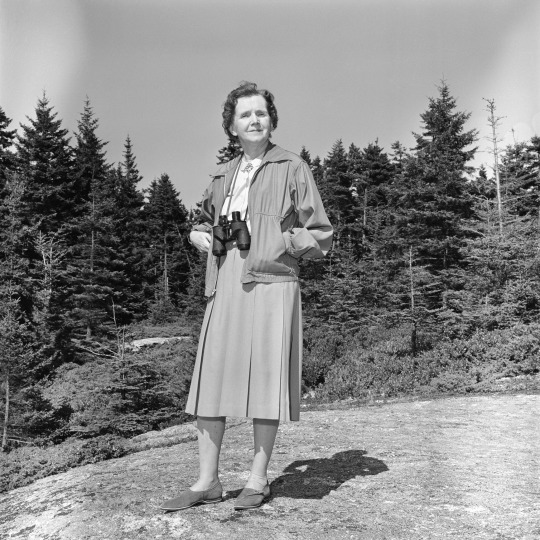
Rachel Carson was a staunch defender and lover of birds.
When we hear the word “naturalist,” we often think of Charles Darwin and his theories, John Muir, the “Father of National Parks,” and of course, John James Audubon. But let’s not forget the women who rallied to preserve the natural realm. From creating the first avian field guide, to ending the feather trade, to dying in pursuit of birds, these seven femmes prove that the history of incredible women transcends any single month.
Genevieve Estelle Jones
1847-1879
Ohio native Genevieve Estelle Jones was a self-taught scientific illustrator christened the “other Audubon.” After seeing some of Audubon’s paintings at an exhibition, Jones decided to draw the nests and eggs of the 130 bird species nesting in Ohio at the time. But before she could finish, she died from typhoid fever at age 32. Her family spent the next seven years completing the hand-colored plates, of which 90 copies were made. Only 26 still exist.
Harriet Lawrence Hemenway and Minna Hall
1858-1960 and 1864-1944
This two-woman dream team was responsible for taking down the 19th-century plume trade and establishing the National Audubon Society. Appalled by the number of birds being killed in the name of fashion, Hemenway, an impassioned amateur naturalist, and her cousin Hall, persuaded their socialite friends to boycott the trade and protect the wildlife behind it. Ultimately, they recruited 900 women to join the fight, and gave rise to an establishment that, a century later, has grown to 1 million members and supporters strong.
Florence Merriam Bailey
1863-1948

Florence Merriam Bailey, maker of the first known bird guide, in New Mexico, 1901.
American nature writer and ornithologist Florence Merriam Bailey was a jane of all trades. Not only did she work with the National Audubon Society during its early years, she is also credited for writing the first known bird guide, Birds Through an Opera Glass, published in 1889. A true pioneer in the field, Merriam protested the mistreatment, killing, and trade of feathered animals. Her legacy still remains in the form of a subspecies of the California Mountain Chickadee, Parus gambeli baileyae, that was named in her honor.
Rachel Carson
1907-1964
Rachel Carson is most famous for her book Silent Spring, in which she bared the sins of the pesticide industry. In her later writings, the author and activist continued to examine the relationship between people and nature, questioning whether human beings are truly the dominant authority. Needless to say, she was an outspoken advocate for the environment and one of the greatest social revolutionaries of her time.
Frances Hamerstrom
1907-1998
This female ornithologist dedicated the majority of her life to just one kind of bird: The Greater Prairie-chicken. Frances Hamerstrom headed a research team that ultimately saved the eccentric species from extinction in Wisconsin. She helped identify the ideal habitat for prairie-chickens, and was also one of the first to put colored leg bands on wild birds—a technique that has helped reveal important information on bird behavior through the decades.
Phoebe Snetsinger
1931-1999
When faced with the grim diagnosis of melanoma, 50-year-old Phoebe Snetsinger turned her life upside down: She went from being a housewife to racing around the globe as a competitive birder. Despite being beaten and raped in Papua New Guinea, Snetsinger never gave up on her passion. In 1995, she broke a world record by being the first person to spot more than 8,000 species of birds. A short time later she died in a bus crash while birding in Madagascar. But she will always be celebrated for living life with absolute fearlessness.
These women are just a few of the heros who forged the path for the modern-day bird-conservation movement. Today’s ornithologists, birders, and activists certainly match their passion and dedication. In fact, in 2011, of the 47 million birdwatchers in the United States, more than half were women. Between women spearheading sustainable projects around the world, Audubon’s standout conservationists, and badass chicks
0 notes
Text
Professors of the Ouisko region
Professor Redpine: Likely the first professor an aspiring trainer will meet upon arriving in the Ouisko region, Professor Redpine is renowned for having a diverse range of research topics. A tall, slender man with a well trimmed salt-and-pepper beard with ever curious eyes, Professor Redpine often resembles an old fashioned gentleman scientist, preferring suits to the lab coats of other professors. When he’s not pursuing a new research thread of ecology, chemistry, astronomy, or geology, he can usually be found in Creamstone University giving lectures to new students or distributing Ouisko’s starter Pokemon to new trainers. Though extremely intelligent and welcoming to any who express a desire to explore or learn, he can be easily distracted by a new hypothesis. This has gotten him into trouble quite a few times over the course of his academic career.
Professor Sucre: As a contrast to Professor Redpine, who most often can be found in the hustle and bustle of Creamstone City, Professor Sucre is a hermit and recluse among the professors. This is not to say he is unfriendly or misanthropic, quite the opposite; rather, he believes the best way to learn about the interactions between humanity, Pokemon, and nature is to live out in the wilds. A slight, balding, bespectacled man, at first glance few would suspect him of being one of the foremost ecological experts in the region. Professor Sucre tends to a remote cabin among the pine barrens of the Sand Plains, writing copious journals of his observations of nature and his own thoughts on the relationships between all living things.
Professor Juneberry: A newer face of Pokemon academia, Professor Juneberry only recently ascended to professorhood from under Professor Sucre’s wing. A former Adept of the Council of the Sky, the Flying-type Council operating out of Azure Mound Park, the young Juneberry had been infatuated with bird Pokemon for years before she earned her spot alongside the newly instated Council under Council Master Briene, with whom she had and continues to have a powerful friendship. While she was a powerful Trainer, she found her passions were more in learning about Flying-type Pokemon than battling with them, and so ended up working alongside Professor Sucre for many years.
Professor Juneberry is a young woman with tanned skin, short dark brown hair, and is often clad in flannel, worn jeans, and hobnailed boots. Juneberry considers herself better suited to field work than to lab work, as she is energetic, forward, and isn’t afraid of speaking her mind. Currently, she is studying the migration patterns of Flying-type Pokemon, though she has also expressed interest in studying the Morph Moves of Ouisko, moves that change in power and effect as Ouisko Pokemon evolve.
Professor Tamarack: It is a rare person in Ouisko that doesn’t know Professor Tamarack, at least by name. When she was a young girl, she was one of the foremost voices in opposition to the powerful Team Forge, even before such resistance was popular. Once the tide began to turn against Team Forge and their plans to change all aspects of Ouisko to serve humans, she was continually on the front lines fighting with her loyal Curteract tearing down their fortified institutions. Once the balance between humans, Pokemon, and nature at large was restored, she returned to the coast of Lake Michi-Gami where she grew up so she might fall back in love with its natural beauty. 75 years of researching the ebbs and flows of the freshwater seas that border Ouisko, she has earned quite a reputation of knowing the waters and Water-type Pokemon of Michi-Gami inside and out.
An elderly woman with pale skin, her hair tied up in a bun, often donning her worn lab coat and leaning on a cane, Professor Tamarack still carries a sharp tongue and is tremendously proud of her deeds both past and present. She is a fierce defender of nature, especially the dense forests of the Pink Petal Peninsula she has called home for the last 75 years. She has had little time for study of late, unfortunately, as something deep in her old bones tells her an old enemy might be rearing its iron head...
(Inspired by Increase A. Lapham, Aldo Leopold, Frances Hamerstrom, and Emma Toft respectively, important conservation and naturalist figures in Wisconsin history)
1 note
·
View note
Text
Frances (Flint) Hamerstrom - Rich Girl to Wildlife Conservationist
Frances (Flint) Hamerstrom – Rich Girl to Wildlife Conservationist
View On WordPress
0 notes
Photo

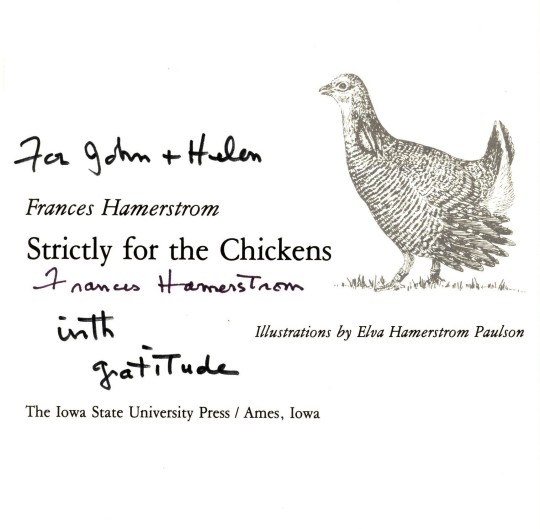



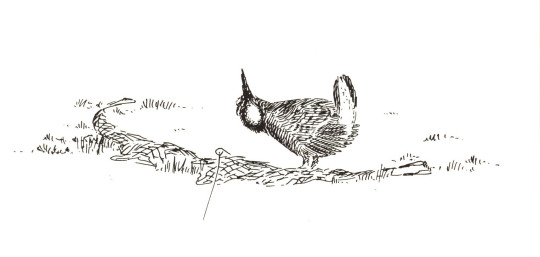



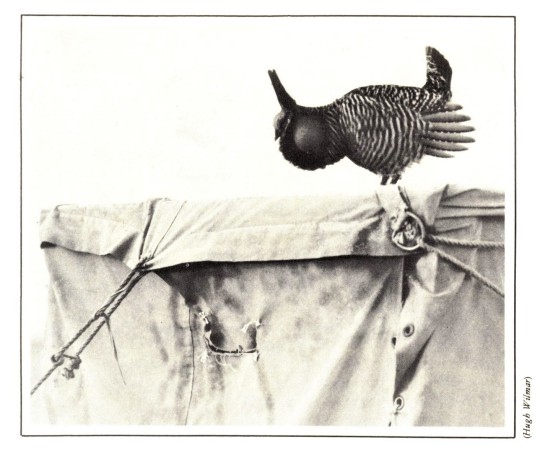
A National Chicken Month Feathursday
September is National Chicken Month! What a great opportunity to celebrate these beautiful birds. Today we’re sharing Strictly for the Chickens by Frances Hamerstrom, published by Iowa State University Press in 1980. The book tells the story of Frances and her husband Frederick’s work to study and conserve the Greater Prairie Chicken in Wisconsin. Frances and Frederick were inducted into the Wisconsin Conservation Hall of Fame in 1996.
The Prairie Chicken (Tympanuchus cupido) is technically a kind of Grouse, but we’re going with it since “Chicken” is in the name! Frances and Frederick Hamerstrom moved to the middle of Wisconsin in the 1930s to study the Prairie Chicken and by 1950 their research was “flourishing to the extent that they needed outside help to collect data during the ‘booming’ [mating] season” (back dust jacket flap). The Prairie Chicken was in danger of extinction when they began their research and conservation work and “Today, over 30,000 acres are managed by the Wisconsin Department of Natural Resources as greater prairie chicken habitat. Birdwatchers travel from around the world to visit Wisconsin in April for the Central Wisconsin Prairie Chicken Festival, started in 2006 by Golden Sands Resource Conservation & Development Council, Inc.” (Wikipedia).
View more posts about Prairie Chickens.
View more Feathursday posts.
- Alice, Special Collections Department Manager
#Feathursday#Prairie Chicken#Greater Prairie Chicken#National Chicken Month#Grouse#Frances Hamerstrom#Frederick Hamerstrom#Chickens#booming
93 notes
·
View notes
Photo
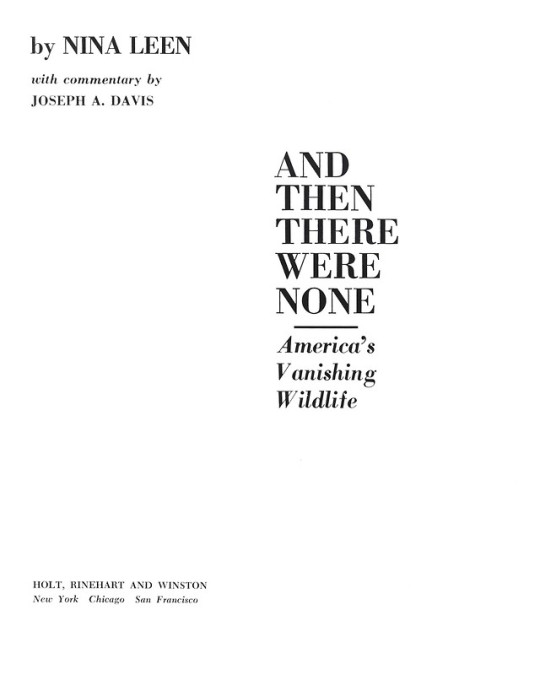



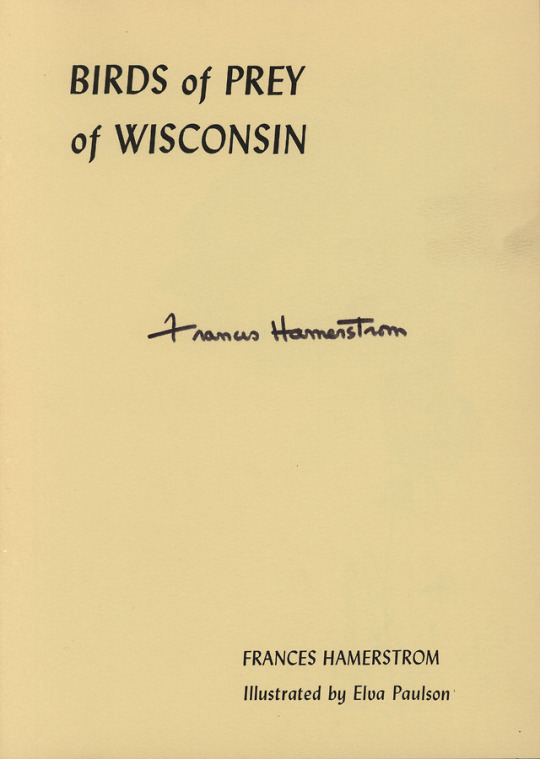


A #Feathursday Staff Pick of the Week
When I first arrived as a student at UW-Milwaukee, it was very odd finding headless pigeons around campus and the surrounding neighborhood. It took a couple years for me to find out that we had Peregrine Falcons hanging out and even nesting on and around the Engineering and Mathematical Sciences building.
So, for my staff pick this week, or picks if you will, I have chosen two different books. The first is Birds of Prey of Wisconsin by Frances Hamerstrom, illustrated by Elva Paulson. Published in 1972, the book gives a dismal, Silent Spring-esque view of the population of these falcons in Wisconsin. Hamerstrom writes, “The peregrine no longer nests in Wisconsin,” which seems contradictory to my experiences here on campus! Then again, Hamerstron’s observation was made in 1972.
And Then There Were None: America’s Vanishing Wildlife by photographer Nina Leen is my second staff pick. In her chapter “A Breakthrough in Captive Breeding” she discusses the Peregrine Falcon. Artificial insemination between a falcon pair worked at Cornell University and at the State University of New York they managed to get a pair to produce chicks on their own. This book was published by Holt, Rinehart and Winston in 1973, with commentary by Joseph A. Davis.
Both of these books come after the wake of environmental justice activism in the 60’s and 70’s. Wisconsin has been a very important actor in all of this. UW-Milwaukee had the Peregrine falcon brought to campus in 2007 in an effort to reintroduce the falcon into our environment naturally. There is a webcam that you can watch the falcons nesting on our EMS building here. Conservation of important, native species does not only occur in forests and fields, but in our own backyard. Because of recent work, the Peregrine Falcon’s population is now considered of Least Concern. As I am graduating soon with a degree in Conservation and Environmental Science, finding books like these in our collection is always very interesting.
View more of our posts on the work of Frances Hamerstrom and Elva Paulson.
View more Feathursday posts.
View our other Staff Picks of the Week.
- Sophia, Special Collections Undergraduate Assistant
#UW-Milwaukee#staff pick of the week#Sophia#Peregrine falcon#UWM Special Collections#birds of prey#conservation#1970s#Wisconsin#Frances Hamerstrom#Elva Paulson#Nina Leen
24 notes
·
View notes
Photo
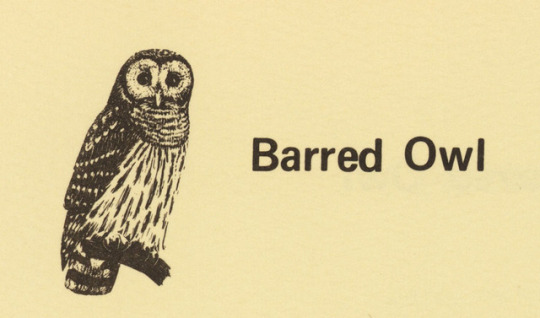
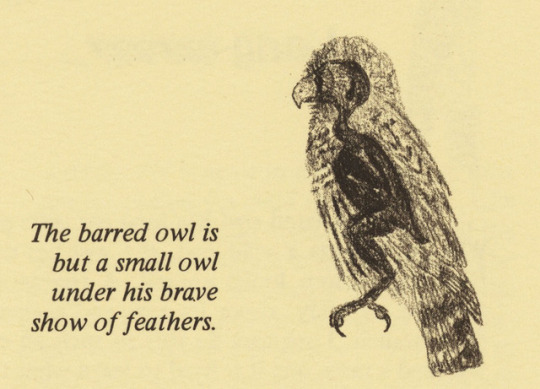
Monday Motivation Owl
Small with a brave show of feathers. May this Barred Owl (Strix varia) be a source of motivation for you this Monday. Just put on your brave show of feathers!
These images are from our special 1972 edition of Frances Hamerstrom’s Birds of Prey of Wisconsin, signed by the author and published by the Wisconsin Society for Ornithology with illustrations by Hamerstrom’s daughter Elva Paulson.
View more posts from this book.
View more motivated (and some unmotivated) owls.
#MondayMotivationOwl#owls#Barred Owls#Frances Hamerstrom#Elva Paulson#Birds of Prey of Wisconsin#birds
37 notes
·
View notes
Photo

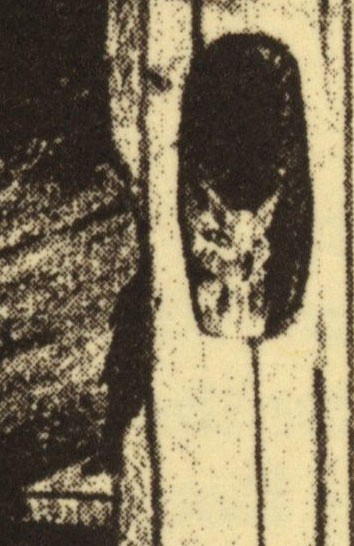
Monday Motivation Owl
If you build a nest box for an owl be sure to include a porch inside “so the owl can face the sun and watch the world go by.” A perfect place to be this Monday when we aren’t quite motivated enough to actually interact with the world.
This image is from Birds of Prey of Wisconsin by Wisconsin naturalist and ornithologist Frances Hamerstrom and illustrated by Elva Paulson, published in 1972 in Madison, Wisconsin by the Department of Natural Resources.
View more motivated (and some unmotivated) owls.
#MondayMotivationOwl#wisconsin#owls#the imperturbability of owls#nest box#monday#frances hamerstrom#Elva Paulson#watching the world go by
35 notes
·
View notes
Photo


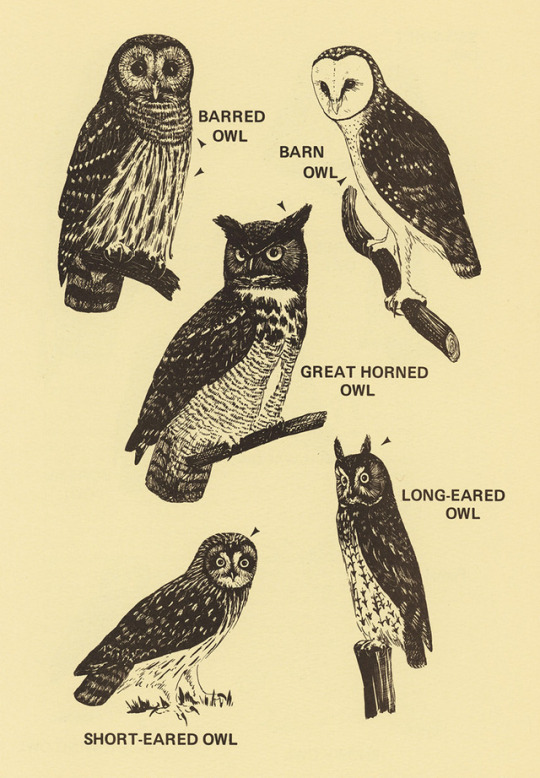
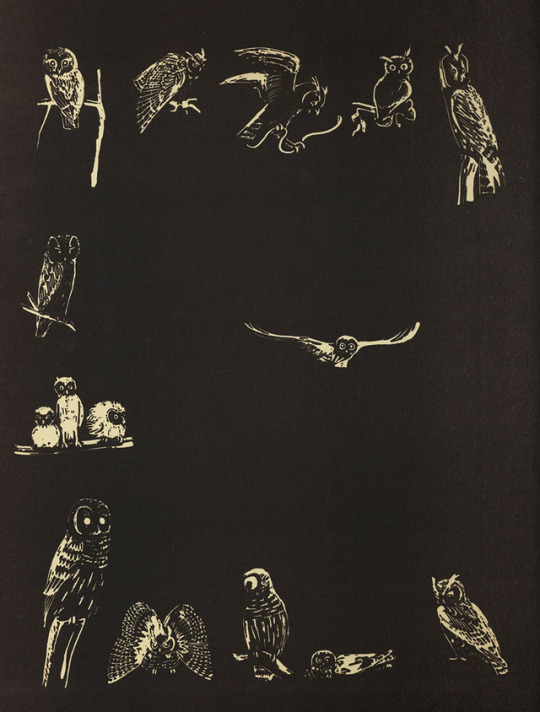

International Owl Awareness Day 2017
Owls are appreciated every day here at UWM Special Collections, and to celebrate this designated day of Strigiformes awareness we are showing off Wisconsin owls.
Birds of Prey of Wisconsin was written by Frances Hamerstrom and illustrated by her daughter Elva Paulson. Frances and her husband Frederick came to Wisconsin to work with prairie chickens in 1935. In 1940, Frances was the only woman to earn a graduate degree, studying with Aldo Leopold, at the University of Wisconsin–Madison. Both of the Hamerstroms were inducted in to the Wisconsin Conservation Hall of Fame in 1996.
Frances says that to attract owls: “Listen, especially at dusk or daybreak, and if you can imitate calls well . . . you may attract owls you would not otherwise have seen.”
In comparing hawks and owls she says: “Hawks and owls both have sharp talons and strong hooked beaks but they differ in their hunting tactics – one could almost say they differ in their approach to life. Hawks often miss their quarry; owls seldom miss. They are more apt to wait and wait until they are sure of making a kill.”
Birds of Prey of Wisconsin was first printed in softcover by the Department of Natural Resources Madison, in 1972. Our copy is a special edition that was published by the Wisconsin Society for Ornithology the same year and is signed by Frances Hamerstrom. The book was designed and edited by Ruth L. Hine who, in 1949, was the first woman awarded a PhD in zoology by the University of Wisconsin - Madison. In 2010 Hine was also inducted in to the Wisconsin Conservation Hall of Fame.
#owls#international owl awareness day#birds of wisconsin#frances hamerstrom#strigiformes#the imperturbability of owls#alison#Ruth L. Hine#Elva Paulson
60 notes
·
View notes